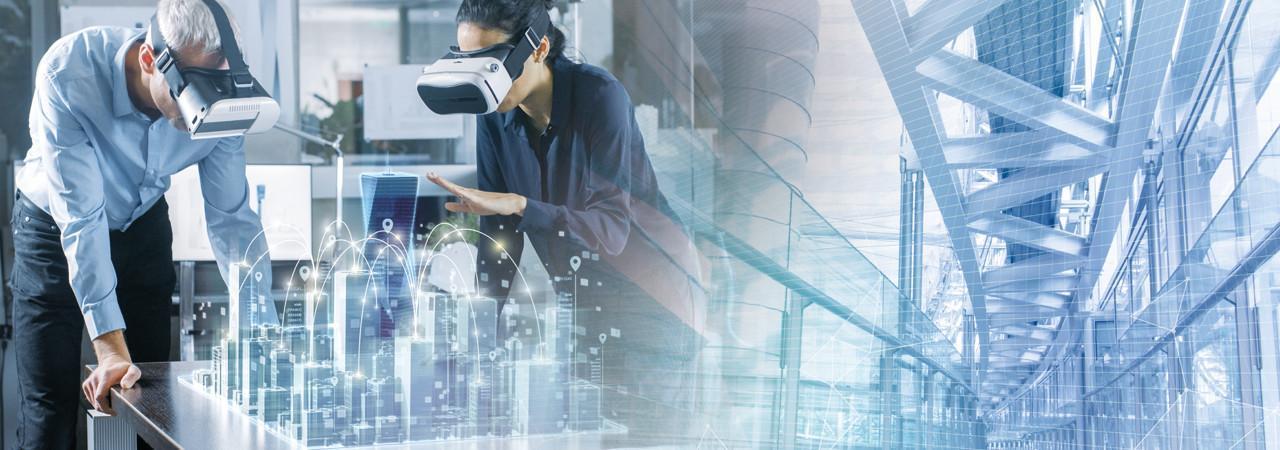When it comes to building brand loyalty, customers increasingly expect the retailers they shop from - whether that's online, in person, or via click-and-collect - to demonstrate tangible efforts to operate in an ethical, sustainable, and environmentally friendly manner in everything they do.
No matter how sure you are that your network is secure, you may still be at risk of cyberattacks. It's no exaggeration Cybercriminals are constantly working to stay one step ahead of organisations and security professionals, exploiting any vulnerability they can in even the most sophisticated systems.
It's well-established that security is an essential part of all infrastructure. With data protection more of a concern for customers and end users than ever - particularly in light of regulations like the Cloud Act and GDPR - it's vital that organisations demonstrate a clear commitment to the security of their networks, Cloud applications and physical devices.
The move towards Hybrid Cloud infrastructures - with on-premise solutions systems connected to Public and Private Clouds to maximise the benefits of each solution - has been in progress for a number of years now. Indeed, in 2019 it was reported that 69% of organisations were already utilising some form of Hybrid Cloud solution1. Since then, the move towards a distributed workforce in response to COVID-19 has accelerated this process, with 82% of organisations reporting that they have accelerated their Cloud adoption strategies as a result of the pandemic2.
We see over and over again how COVID-19 is transforming the way we work and connect with each other. Employees across virtually every industry are now working effectively from home, even if such an arrangement would have been unthinkable at the start of this year. It's been extremely heartening to see the range of innovations that have been embraced in response to the crisis, but it's important not to forget the foundations of your IT infrastructure as you explore these solutions. For example, consider how you are backing up and storing the lifeblood of your organisation: your data.
Cloud adoption has been rising year by year for some time now, with Gartner predicting this trend to accelerate beyond 2020. It has long moved on from its earliest days, where it was largely regarded as an intriguing concept but unsuitable for enterprise-level applications. Now, with a wide range of options available - including Public, Private and Hybrid solutions - it has become a highly attractive prospect for organisations at all levels, especially against the backdrop of COVID-19 and the resulting advancement of remote working. While these trends are very much the latest stage in a long process of transformation, the pandemic has undoubtedly been the catalyst behind much recent Cloud adoption, as organisations accelerate their journeys towards a distributed workforce.
So, where does that leave us in terms of the biggest question: "Is Cloud right for my organisation?"
Having returned from the BSA Conference 2025, it was clear that building societies are navigating a critical juncture - balancing their relationship-led service models while addressing the urgent need to modernise outdated systems and improve operational efficiency. Given the current geopolitical climate, and the increasing pace of innovation, developing a strategy that not only solves immediate challenges, but offers sufficient scope to tackle future issues, can often seem like a moving target.
These state-of-the-art technologies are being used by architects to effortlessly showcase realistic project images to potential clients and stakeholders, enabling the latter to make any changes they want and give feedback on designs (or approval) in no time.
But VR / AR / MR is just the latest flowering of Digital Transformation (DX) to be adopted by the industry - and depends upon the same underlying technology.
Digital transformation: opportunities and challenges
By nature, architecture is an industry defined by evolution, so its early adoption of DX should come as no surprise. In firms across the world, the design process has moved away from drawing boards and tracing paper towards computers. In turn, clients have become more demanding, making collaborative simulation and visualisation a key - almost compulsory - part of the design process.
Consequently, computers have had to become more powerful and graphics greatly improved to keep up with the rendering requirements; architects also require access to a centralised graphic store, and this access similarly requires a lot computational and networking power.
The Fourth Transformation: opportunities and challenges
As the Fourth Transformation takes hold - bringing forth advances in VR / AR / MR - technology is becoming increasingly immersive and collaborative. For the architecture industry, this means that seamless cloud-based collaboration between contractors, engineers and architects is both possible and highly desirable.
Such collaboration entails not only simple file transfers and data conversion but also, increasingly, the embedding of VR / AR / MR into business operations. The popularity of such technology has risen in the sector, thanks to its emerging value as an educational tool.
However, this brave new world of unified communications and virtual desktop infrastructure is powerless without the right network. Across the industry, gigabit requirements are becoming the norm; by contrast, only three years ago, 100mb would often suffice. In a bandwidth-hungry digital landscape, the network is the cloud - so it's easy to see why a cloud can only be as good as the network it traverses.
Conclusion
By harnessing the power of cloud computing and a robust, reliable network in tandem, architecture firms can set themselves apart from their competitors and respond super-fast to those last-minute emergency requests that can suddenly arise from contractors all over the world. By partnering with the right supplier as well, firms can stop worrying about business continuity, getting back up and running if their systems fail.
Achieving successful digital transformation across the Architecture, Engineering and Construction Sector.
New technologies are transforming every aspect of how projects are brought from conception to completion across the AEC sector. As a result, numerous leaders across the sector are accelerating their digital transformation plans, embracing the Cloud, AI, big data, and IoT in order to both overcome their immediate challenges and bring their long-term business goals closer.
Although digital transformation amongst Legal firms has typically been comparatively slow compared to other sectors, the journey has picked up speed over the course of the last decade.
Organisations' demands of their IT infrastructure continue to evolve at an unprecedented rate, with the drive for growth and innovation needing to be balanced against the need to maintain cost control, visibility, and - crucially, cyber security. Numerous solutions have emerged in response to these challenges, but one of the most pivotal questions organisations must answer is whether to host their critical data and applications on-site, or in the Cloud.
Let's explore the respective advantages and disadvantages of both approaches, and then consider whether the increasing sophistication of modern workloads demand a new approach...
Like many organisations throughout 2020, professional associations have been forced to dramatically reconsider how they interact with both current and potential members, in light of social distancing requirements and the move towards a distributed workforce.
The Retail sector is more diverse, dynamic, and rapidly changing than any other time in its history. This not only encompasses the way customers make their purchases – with online shopping, click-and-collect, and in-person shopping all converging to offer true, end-to-end experiences – but also the way retailers open and operate new sites. Whether this means trendy pop-up shops, kiosks at other brands' locations, or booths at events, retailers from up-and-coming start-ups to global leaders are no longer relying on fixed high-street locations to welcome their customers and put their wares on display, instead making sure they are present wherever their ideal customers are, and fully prepared to offer a world-class experience that builds brand recognition and loyalty.
Like many longstanding institutions, Britain's world-renowned pubs are undergoing their own digital transformation journey, utilising leading-edge technologies to offer truly personalised experiences to patrons of all ages and backgrounds - from longstanding regulars visiting for their usual pint, to families looking for a meal, and young professionals working on the go. It's an exciting time for the sector as a whole, but at the same time, the drive for modernisation must not come at the expense of patrons' safety and enjoyment.
The Finance sector has always been one of the most dynamic, rapidly evolving industries, and this shows no signs of changing any time soon. But while shifts in the landscape may well open new opportunities, they will also come with new challenges, and it is the organisations who are ready and able to face these head-on who will continue to thrive in the years ahead.
In today's competitive environment, being flexible is a fundamental part of any business strategy to survive. To be flexible, organisations must make the necessary changes needed to respond effectively to the changing market. One simple way organisations can increase their flexibility is by using the innovative technology solutions and services that are available.
In 2019, we worked with a customer who owns and operates a mine in Mozambique to help them identify their key business objectives and advise them on how to succeed on these. Throughout our discussions with them, we defined the below key objectives:





















